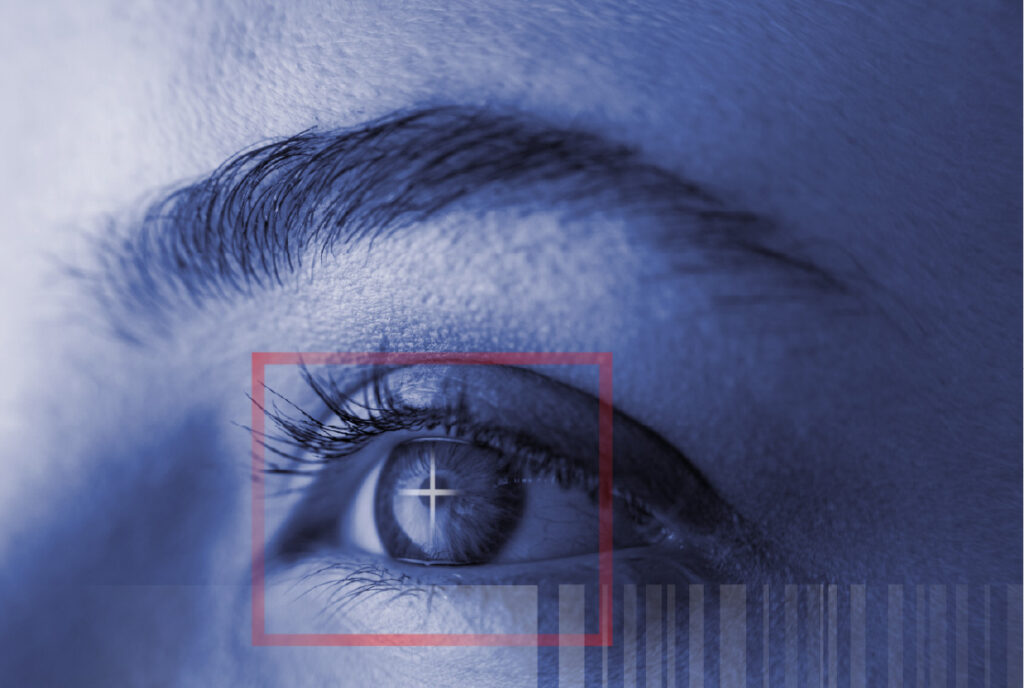
RDH12
Sight Beyond Limits for RDH12
What is retina?
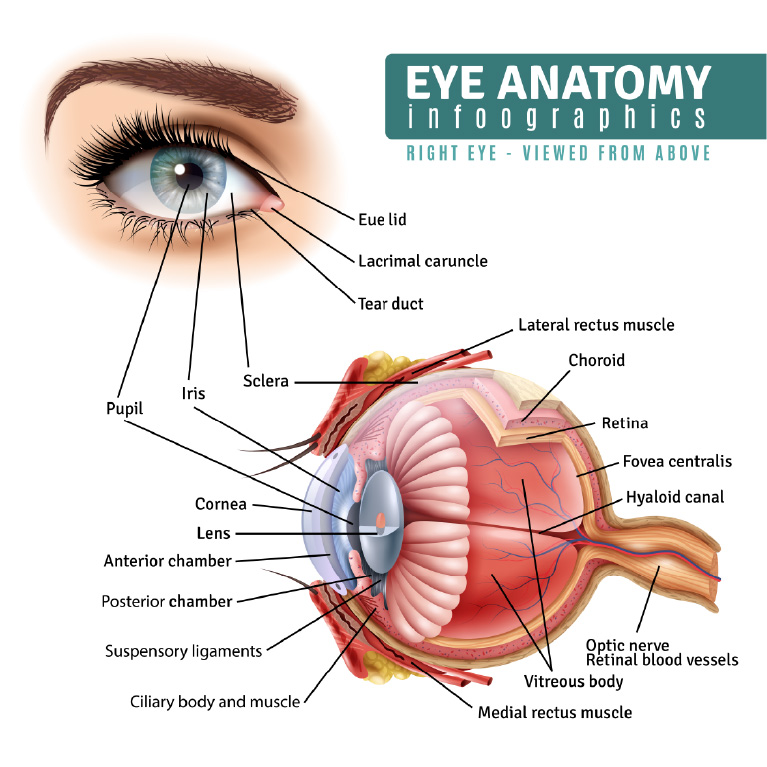
At the back of the eye, there is the retina, which is composed of various layers of cells designed to capture and detect light. Light is then converted into electrical signals and transmitted to the brain through the optic nerve.
The light-sensitive cells in the retina are called photoreceptors and are divided into two types: cones and rods. Cones are responsible for central vision, high acuity, color perception, and functions that require precise vision, such as reading. Rods, on the other hand, are specialized for peripheral vision and excel in low-light conditions (known as scotopic vision). They are also important for detecting contrast and motion. Unlike cones, which are primarily concentrated in a small central area known as the fovea, rods are distributed throughout the entire retina.
What is retina
At the back of the eye, there is the retina, which is composed of various layers of cells designed to capture and detect light. Light is then converted into electrical signals and transmitted to the brain through the optic nerve.
The light-sensitive cells in the retina are called photoreceptors and are divided into two types: cones and rods. Cones are responsible for central vision, high acuity, color perception, and functions that require precise vision, such as reading. Rods, on the other hand, are specialized for peripheral vision and excel in low-light conditions (known as scotopic vision). They are also important for detecting contrast and motion. Unlike cones, which are primarily concentrated in a small central area known as the fovea, rods are distributed throughout the entire retina.

What is Retinitis Pigmentosa and Leber amaurosis (LCA)
Retinitis Pigmentosa is a group of progressive inherited retinal dystrophies. A primary symptom of this condition is night blindness, followed by the loss of peripheral vision, and eventually central vision.
One specific subgroup of this condition is Leber Congenital Amaurosis (LCA), characterized by severe vision loss from birth. Some patients may also exhibit crossed eyes (strabismus), eye movement difficulties (nystagmus), light sensitivity (photophobia), a thin and cone-shaped cornea (keratoconus), hypermetropia (farsightedness), and the tendency to poke, press, or rub their eyes.
LCA is relatively rare, affecting approximately 1 in 80,000 individuals worldwide. It is the most common form of inherited vision loss in children. LCA is associated with mutations in more than 25 genes, with the most common ones being CEP290, GUCY2D, and CRB1. Genetic testing is essential for identifying the mutations responsible for RP or LCA.
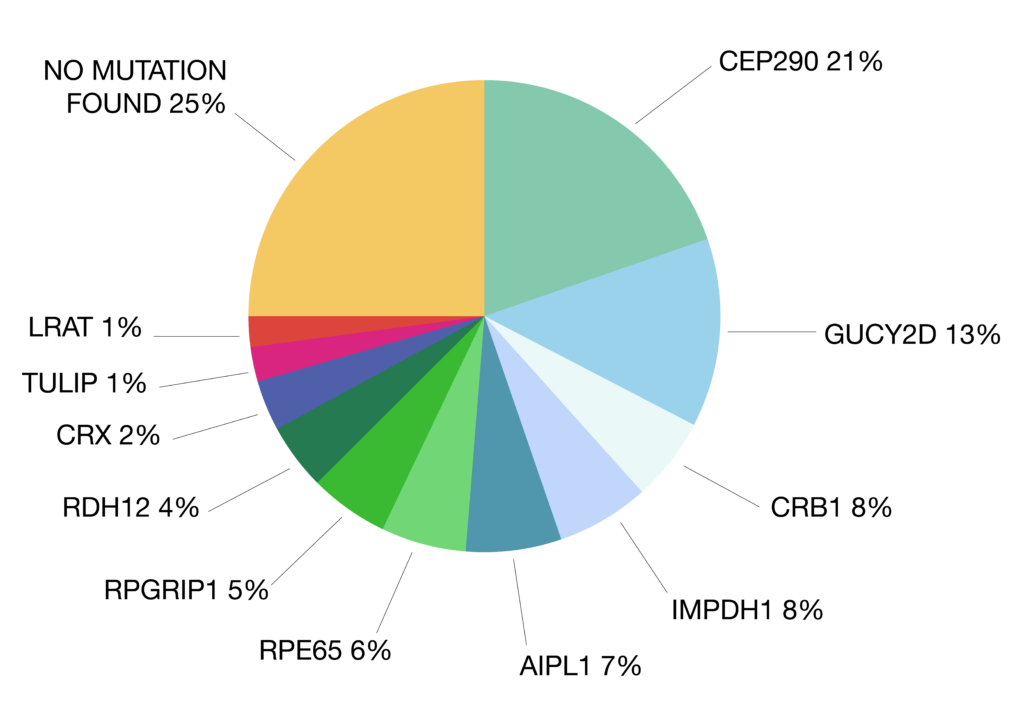
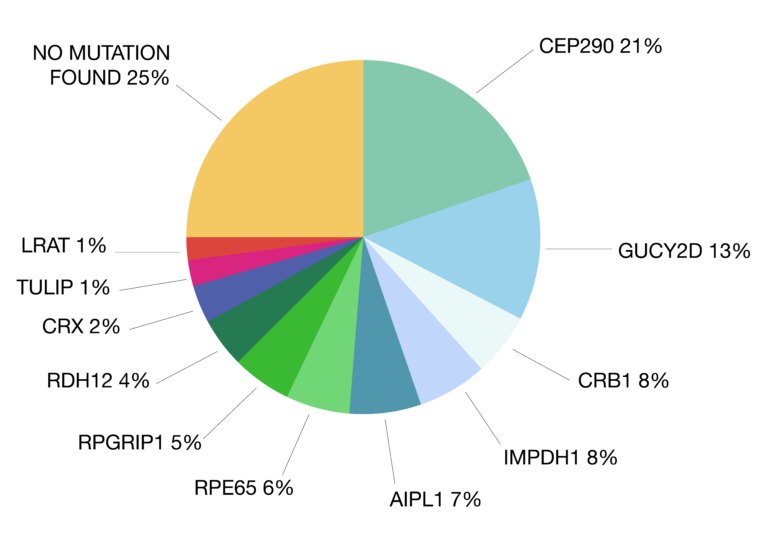
What is Retinitis Pigmentosa and Leber amaurosis (LCA)
Retinitis Pigmentosa is a group of progressive inherited retinal dystrophies. A primary symptom of this condition is night blindness, followed by the loss of peripheral vision, and eventually central vision.
One specific subgroup of this condition is Leber Congenital Amaurosis (LCA), characterized by severe vision loss from birth. Some patients may also exhibit crossed eyes (strabismus), eye movement difficulties (nystagmus), light sensitivity (photophobia), a thin and cone-shaped cornea (keratoconus), hypermetropia (farsightedness), and the tendency to poke, press, or rub their eyes.
LCA is relatively rare, affecting approximately 1 in 80,000 individuals worldwide. It is the most common form of inherited vision loss in children. LCA is associated with mutations in more than 25 genes, with the most common ones being CEP290, GUCY2D, and CRB1. Genetic testing is essential for identifying the mutations responsible for RP or LCA.
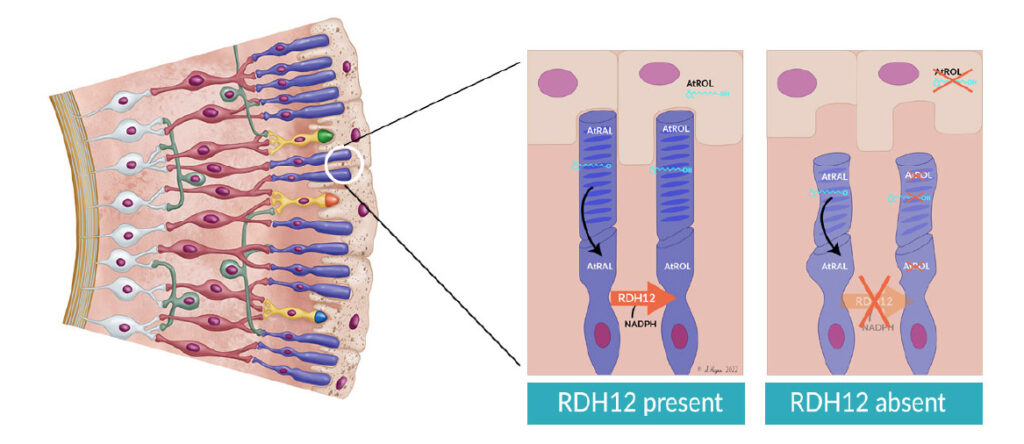
What is RDH12
One of the genes associated with Leber Congenital Amaurosis (LCA) is RDH12 and is known as LCA type 13. The RDH12 gene is involved in the recycling of retinol, a form of Vitamin A, which is essential for the visual cycle and light detection by the photoreceptor cells of the retina. Patients with early-onset RDH12 LCA experience symptoms either from birth or within the first two years of life, while others may develop symptoms during their second decade of life, and severe vision loss typically occurs after adulthood.
RDH12 is considered a rare gene, as only 2.4% of LCA patients have mutations in this gene. As a result, it affects a very small number of patients, which has led to limited attention and priority from pharmaceutical services involved in research for inherited vision-related diseases.
As for the statistics, there are about 200 families in the world affected by the RDH12 gene. In Cyprus there are only two patients, one six years old boy and a thirteen years old girl.
No child experiences the same progression of RDH12-related diseases, highlighting the necessity of genetic testing. Currently, there is no available treatment for diseases associated with RDH12. Worldwide, researchers are studying these diseases to understand the mechanisms that cause them and to identify potential treatments.

